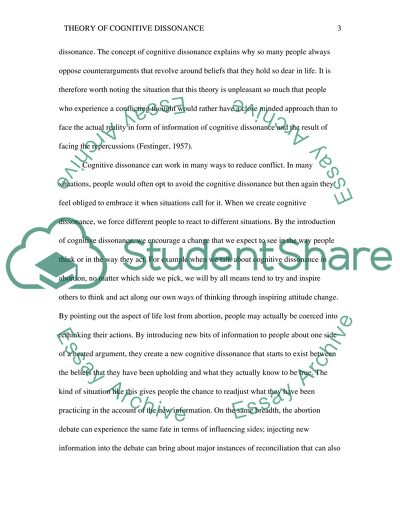Cite this document
(“Theory of Cognitive Dissonance Essay Example | Topics and Well Written Essays - 2750 words”, n.d.)
Retrieved from https://studentshare.org/psychology/1404084-theory-of-cognitive-dissonance-apply-it-on
Retrieved from https://studentshare.org/psychology/1404084-theory-of-cognitive-dissonance-apply-it-on
(Theory of Cognitive Dissonance Essay Example | Topics and Well Written Essays - 2750 Words)
https://studentshare.org/psychology/1404084-theory-of-cognitive-dissonance-apply-it-on.
https://studentshare.org/psychology/1404084-theory-of-cognitive-dissonance-apply-it-on.
“Theory of Cognitive Dissonance Essay Example | Topics and Well Written Essays - 2750 Words”, n.d. https://studentshare.org/psychology/1404084-theory-of-cognitive-dissonance-apply-it-on.


